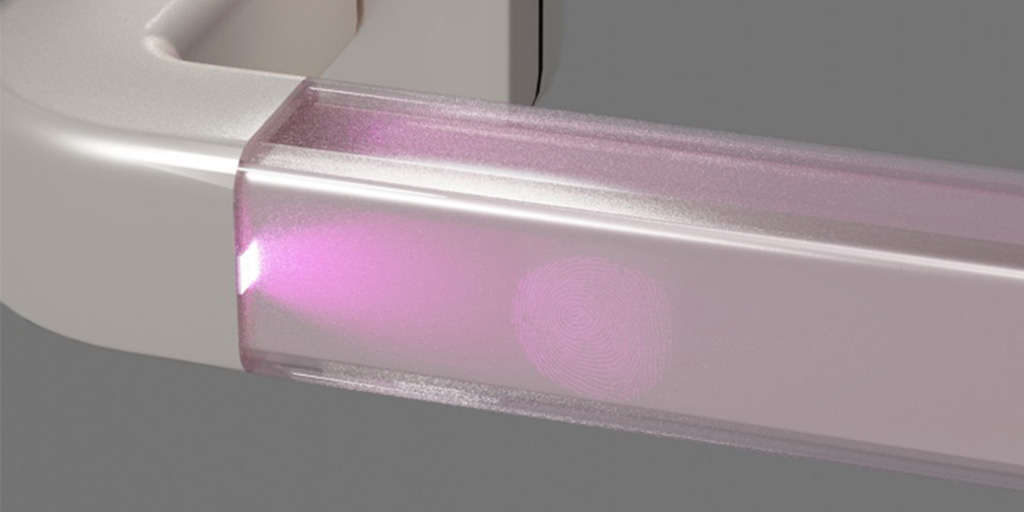
Overview:
Philips has developed a new embedded UVC disinfection technology that utilizes a low dosage of UVC to continuously disinfect a frequently touched target surface from the inside; example applications may include touch screens, door handles, and other high-touch areas. UVC radiation is aimed only at the surfaces that are touched and is activated precisely in the right place, for the right amount of time, to destroy pathogens and stop the spread of disease.
Key Technology Features and Advantages:
- Safe disinfection in presence of people – Contrary to external UVC the embedded module can be deployed and disinfect safely in busy areas.
- Low UV intensity – Limited emission through top layer, below ISO threshold radiation.
- Automatic disinfection – No user intervention required; module switches off when human contact is made before reactivating.
- Design flexibility – Small footprint embeddable module for easy integration; applicable to numerous applications by adding a thin transparent layer to the touch point.
- Long service life – No moving parts, 50k hours of continuous operation.
Technology Description:
Operation of the embedded UVC disinfection approach relies on optical properties of the frequently touched surface. These properties could be bulk optical properties of the surface, or optical properties added to the surface by means of a layer cladded/laminated onto the surface. The topcoat material can be anything that has sufficient transparency to UV-C. For flat surfaces such as touch screens, fused Silica (quartz) is best as it has a 90% transmission rate for UV-C. For more complex shapes and for applications where brittle materials are not preferred, UV-C transparent silicones, of some classes of perfluoro polymers like ACC-Chemicals Cytop resin might be a suitable material.
The solution is predominantly based on total internal reflection. In a practical implementation, light scattering phenomena will also cause emission of UVC from the surface. To eliminate unwanted exposure to UVC the detection of any instant, significant outcoupling of UVC light caused by a touch event could be interpreted/identified as such and allow the system to switch off the UVC source throughout.
There is no single design solution that will work for all applications due to optimization of optical path required; design will need to be adapted to the very situation and product of concern. Generic knowledge of optics and materials that sufficiently allow UVC propagation is necessary to conceptualize the implementation options.
Potential Applications:
- · Self-cleaning capacitive touch screens
- Consumer-facing kiosks
- Interactive displays
- Capacitive buttons
- High-touch areas
- Door handles
- Public transport holds and buttons
Seeking Application Partners:
Philips is seeking a partner or partners that have the ability to promote and integrate this technology across multiple industries and applications and is ready to support the right partner with the needed IP, assets, and strong technical expertise.
Related Projects:
